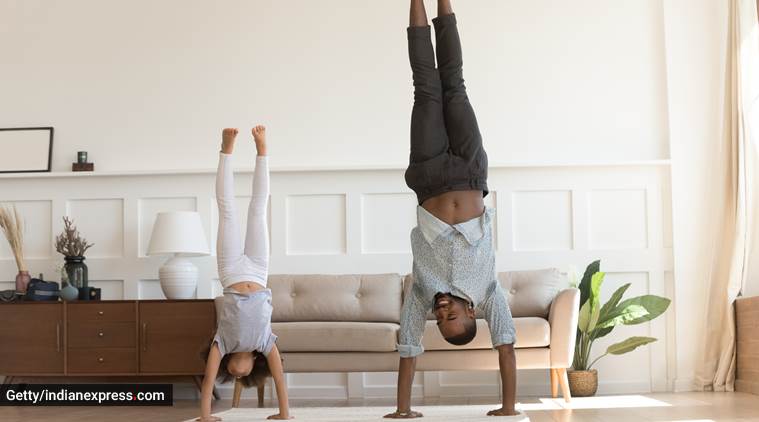How parents can keep their kids physically fit in lockdown, from a sports teacher

Dhaka, 23 June, 2020: A survey by a market intelligence company in 2019 found that two-third of Indians don’t exercise. This being the case, even those who exercise regularly, are at the risk of falling into a new routine of a sedentary lifestyle in the time of corona scare, with gyms, sports clubs, parks and, in some places beaches, being out of reach. The worst affected are school-going children. They miss out on whatever little exercise or physical activity they had at schools. During the lockdown period, their screen time has increased. They spend more time sitting in front of the TV for entertainment or glued to computers, laptops, and mobile phones for social media and online classes. Sports students are no exception — with no prospect of competitions and tournaments at least for the next six months, they feel less motivated to stay fit and practice. In the case of younger children, parents are finding it challenging to keep them engaged in some indoor physical activity during their working hours.
COVID-19 infection, as per scientists, is here to stay for some time. As the physical and mental well-being of people continue to get affected, the importance of fitness becomes even more critical in the present time. This is the moment when Robin Sharma’s book on 5 am club, which focuses on establishing a routine and self-discipline to achieve mental focus and physical fitness, becomes even more relevant.
ALSO READ | Should kids be sent back to schools? Three parents share their lockdown fears
At-home exercises
Despite minimal or no equipment at home, and amid all kinds of challenges, it is still possible to be active enough to meet the minimum health guidelines. To remain physically fit, WHO recommends 180 minutes a week of moderate to vigorous exercise for children above five years of age and adolescents, while 150 minutes of exercise a week is best for adults.
The activities could be on-the-spot jogging, cycling at home or other indoor exercises that increase both our heart rate and oxygen intake. Also, one could add strengthening exercises two times a week. Whether it is cardio-respiratory exercises or muscle strengthening, there are at-home exercises that do not require any gym equipment. Squats, push-ups, lunges, jumping and planks do not need anything other than a mat.
With a little bit of creativity and some space, we can give our body the daily dose of moderate to vigorous exercise, like using books as weights for strengthening exercises. Instead of exercises, we could dance, play with children, clean the house, water trees and plants in the garden, and so on.
Consider taking breaks after every 60 minutes of sedentary time and physical inactivity such as sitting and reclining. Stand up and walk for a while. As for walking, about 7,500 steps a day is recommended. It can burn around 2,000 extra calories each week. Try yoga or Tai Chi to relieve the stiffness of the muscles in the back, and neck.
ALSO READ | No friends, no football: Lockdown diary of a 12-year-old
Consistency counts
Unless we incorporate physical activities into our routine, there will be no desired effects. The benefits of doing workouts 30 minutes a day for three days are more, compared with doing three hours of exercise once in three days.
To make exercise an integral part of your life, you could follow the concept of time blocking. It is about blocking a certain amount of time for physical training and committing yourself to not doing anything other than exercising during the blocked time.
Another effective approach is the ‘if-then thinking’, in which you tie exercise with some other routine activity. Sample these statements: “if I eat supper, then I walk for 15 minutes”, “if it is 5 pm, then I do five push-ups”, or “if I get up in the morning, I do one cycle of sun salutation”. In each of these statements, an exercise is tied to routine activity.
ALSO READ | How to help children deal with anxiety during lockdown
Remember, exercising is a way of life. As the restrictions on our mobility continue in one form or the other in the time of the pandemic, life should go on, with lots of physical movements. Contrary to what we might think, a lockdown can be a golden opportunity for us to explore the art and science of physical activities for which we would not have otherwise found time during the regular days of normalcy.

